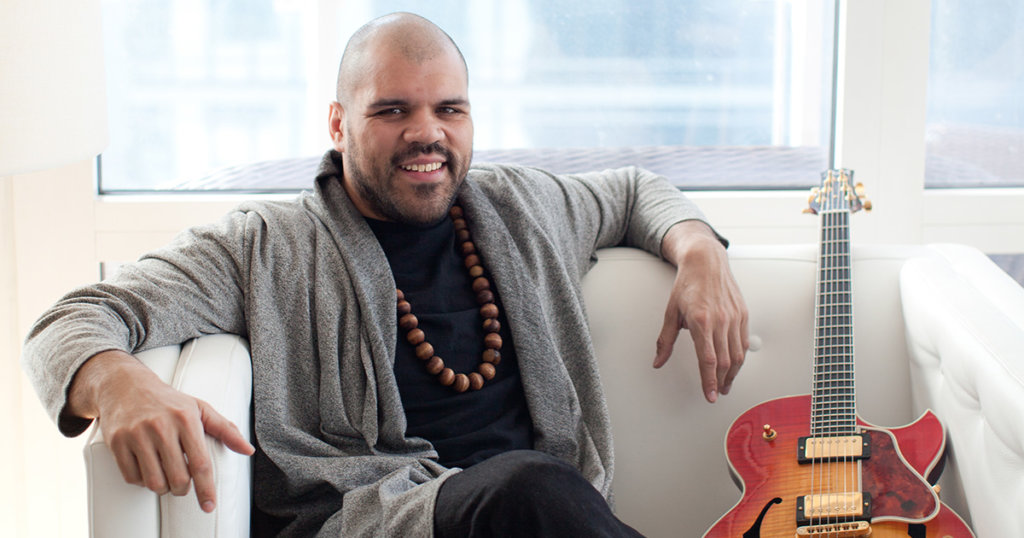Brazil we know for its rich culture and a truly diverse and dynamic music scene. It has become a hotbed for music innovation and we’ve seen a new generation of musicians and composers emerge out to the global stage. One of them is Flávio Silva. A jazz guitarist and composer, he’s broke through the music scenes back home, The Netherlands, and today – New York. He’s also shared the stage with big names like Seamus Blake, Antonio Hart, Victor Wooten, Munir Hossn and many more.
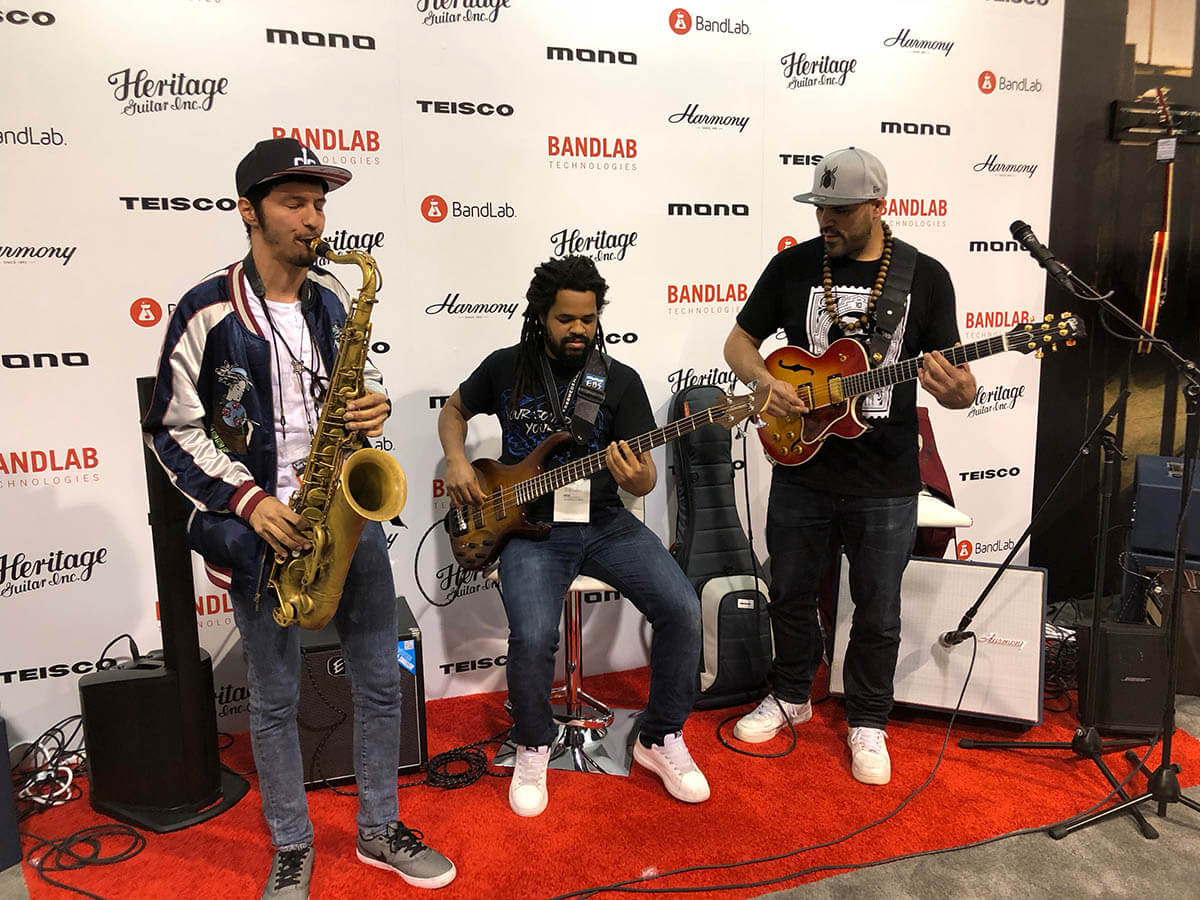
You may find Flávio a familiar figure – he’s on the hang tags of our M80 Dreadnaught cases. We also met up last NAMM at Anaheim, where he played at our booth. This time round, we managed to catch up with Flávio and got up close and personal to speak about his music, his latest album, influences and a whole lot of gear.
What got you into music and how did you get started playing the guitar?
So, I was raised Catholic and my mom would take me with her to church every Sunday. At a certain point I would sit in the front bench every time to check the band out and that inspired me. My father used to have a nylon strings guitar in our house, which would be used to some of his friends when they visited us or when we had family parties, so I asked my mom if I could have the guitar and if she could get me a teacher, so that is how it started. First with a year of classical guitar lessons, then I migrated to the electric guitar when I was about 10.
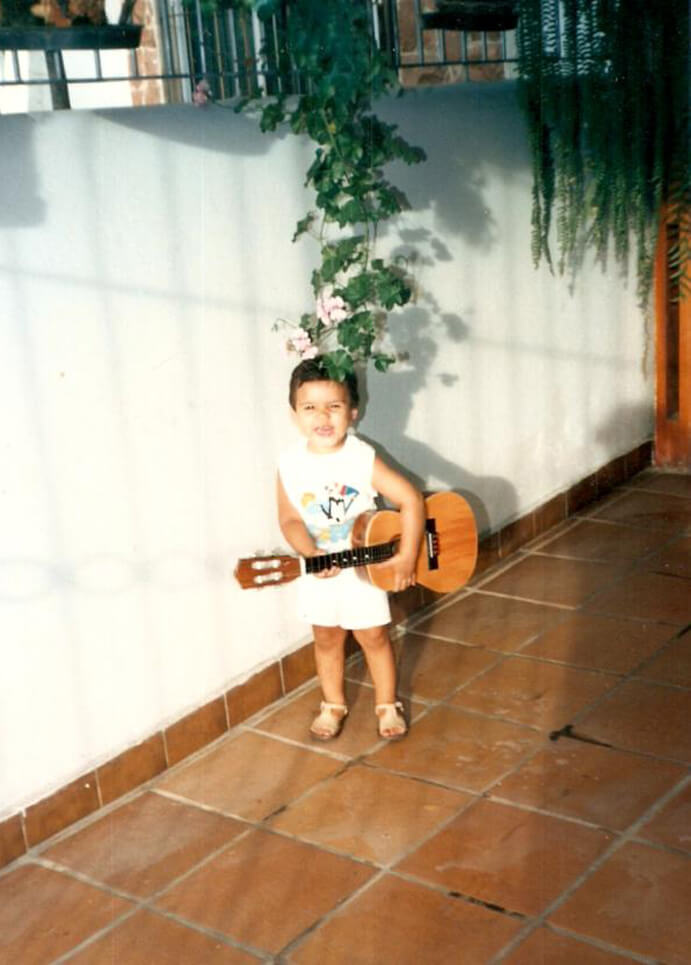
Describe yourself as a musician and guitarist, and what you hope to achieve with your music.
As I am used to saying, growing up in Brazil and starting my career over there, made me learn lots of different genres of music. With that said, I am a versatile musician, who can play a bunch of different styles, from jazz to hip hop, from funk to Brazilian music, from Latin to rock. The music I write is rooted in the jazz tradition with elements from African, Brazilian and hip hop music, and my goal is to connect with the listeners and give them a unique experience through my music. Lots of times, people who write and play instrumental music forget how important is to make music for the people. At times where the technical level is so high, it seems like making complicated music is the “standard”, however, why make music only for musicians? I always ask myself how to balance those points, cos, I believe it is possible to make music with a very high level and still be accessible to the public.
Who were some of your greatest influences when you were growing up? Have your influences changed as your musical tastes have developed?
Well… my biggest influence was Michael Jackson, and with him, Earth Wind & Fire, Kool and the Gang, Chic, James Brown and Carlos Santana. In my house, my father would listen to a lot of Forró, a traditional genre from the northeast of Brazil, so, I should include the Forró Master Luiz Gonzaga as one of my main influences when I was growing up. My mom used to listen to bossa nova, so I got to Jobim and Joao Gilberto from her. As crazy as it can look like, as a guitarist, I never had that big rock and roll phase… I always checked bands like Led Zeppelin, Deep Purple, Red Hot Chilli Peppers (Especially One Hot Minute, my favorite album from them), but the groove would always be stronger for me, in that way, I always loved the funk.
When I was around 14 or 15, my guitar teacher back then, Rogerio Scarton, introduced me to fusion, Tribal Tech/Scott Henderson, Frank Gambale, Allan Holdsworth and Chick Corea. Then my life started to change, because then I found a combination between nice grooves and distorted guitars, which I loved, after that, I started to get into jazz… My first jazz record was Nefertiti, by Miles Davis, I didn’t understand a single thing they were playing when I first got that record, but somehow, I loved it from the first time I listened to it.
My influences definitely changed among the years, but I still go back to the basics of all the genres I like. When it comes to jazz, Wayne Shorter is my biggest hero, and with him, guys like Charlie Parker, John Coltrane, Miles Davis, Wes Montgomery, Jim Hall, Herbie Hancock, Freddie Hubbard, George Benson, among others… The funk: James Brown, Earth Wind and Fire, Chic, MJ, Prince, Stevie Wonder… Brazilian Music: Hermeto Paschoal, Milton Nascimento, Gilberto Gil, Djavan, Filó Machado, Arismar do Espirito Santo…
There is so much beautiful music out there, it is hard to make a short list of everyone that influences me! (laughs).
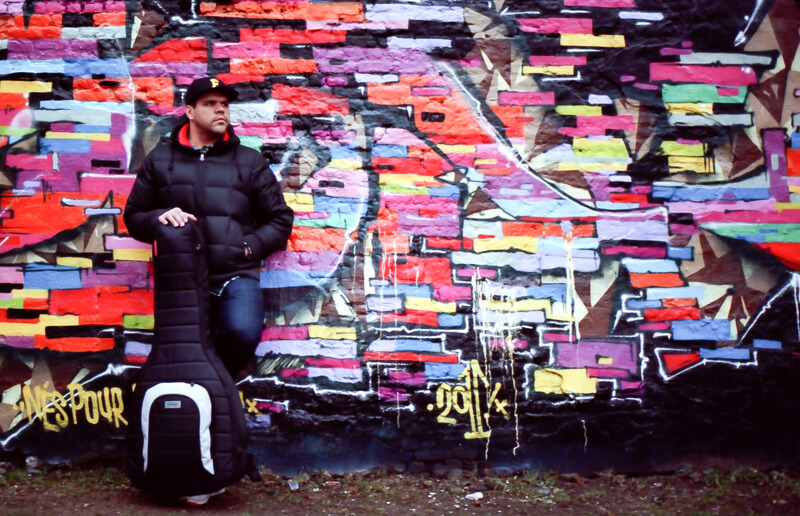
What’s it like sharing the stage with Victor Wooten and all the other talented musicians you’ve worked with?
Well… that was an amazing experience. Victor is such a kind and positive human being, I remember us playing a couple of tunes together and he would be reacting to everything I would play, bringing the music to another level, and, his groove, damn… that is from another world. I am always open to learn from every musician I play with, and being able to play with guys like Seamus Blake, Munir Hossn, Roy Hargrove, and others, is always a lesson. They put the music in first place and make ways to bring that out with their talents. They communicate with the other musicians on the band stand and are always searching for the best way to deliver it to the public. One very important person to me, my mentor Antonio Hart, has taught me a lot about music on and off the bandstand, and on how to connect with the audience. I’ve seen him changing an entire set list because at first the audience would not engage, but after playing a different repertoire, people would be clapping, smiling and even dancing to the music.
You’ve played in quite a number of places like New York and the Netherlands. How different is it compared to playing back home and what do you love about playing abroad?
It all depends on what kind of situation I play… overall, I could say that people abroad have a bigger respect for the music, meaning, they will really listen. While people back home mostly think of it as background music, even if one of the best musicians around is playing within three meters from them. Playing abroad is always a thrill, I get to meet new people, new musicians, make new connections and, I am able to present my music to a new audience, who might not have checked it out yet.
Could you tell us more about the jazz scene in Brazil?
I’ve been living abroad for almost 10 years and the Brazilian jazz scene has definitely changed a lot. Like everywhere in world, we have amazingly talented people in Brazil, and people have been hungry for good music (despite of the audience that enjoys the mainstream crappy stuff we unfortunately have in Brazil). I could say that we have different scenes among, for instance, São Paulo, Rio de Janeiro, Brasília, Belo Horizonte and other capitals. People play jazz and Brazilian music with different influences, which makes the scene very diverse and rich. One thing is for sure, we could definitely have more venues and festivals happening over there.
Let’s talk about your latest release, Break Free. You touch on the subject of culture and your life experiences – could you tell us more about the album and the inspirations behind it?
Absolutely! Since I left Brazil, I immersed myself in the jazz or better, the BAM (Black American Music as used by Nicholas Payton) and since then I tried to leave my roots aside. When I was writing the music for Break Free, I realized I had tunes that combined the BAM roots with my Brazilian and African Roots. I understood I could not try to control that, the music inside me wanted to happen that way and that is how Break Free was conceived. I’ve used some of my personal experiences to write some of the tunes, the song Break Free, for instance, was written after a bad break up, and after the realization that it was time to put all that behind, and with hope and love, and learn from that break up. Brooklyn Bound is a typical train ride in New York, fast and intense. Prayer #2 is my way to chant through music, with a steady melody, like a chant that repeats, but creating a strong rhythm that can bring people to dance.
If you didn’t become a musician, what do you think you’d be doing today?
Brazilian Jiu Jitsu World Champion and teacher.
Tell us a bit about your gear.
I have a couple of guitars, my main one is a Gibson Pat Martino Custom, a Gibson 335, a Telecaster made by N.Zaganin, probably the best Brazilian luthier, a Klein headless guitar made by Steve Klein and an acoustic nylon string made by Esteve.
I have a bunch of pedals and I am always trying new stuff. My main pedalboard these days has the FLAV preamp by Doug Roccaforte, a Free The Tone Ambi Space Reverb, Timeline Delay by Strymon, Klon KTR, Landgraff Dynamic Overdrive, Zero Overdrive by Doug Roccaforte, a Polytune and an Ernie Ball Volume Pedal.
I also use a tube preamp made by Doug Roccaforte named EF808. My amps are a Polytone Mega Brute/Mini Brute and a Fender Deluxe Reverb when possible.
What’s your favorite guitar and what makes it so special?
My favorite guitar is my Gibson Pat Martino. It is a very versatile instrument, I can play any genre with it. This is the second one I have as I sold the first one years ago, but I told myself I would get another one, and as soon I had the opportunity, I grabbed this one and couldn’t be happier!
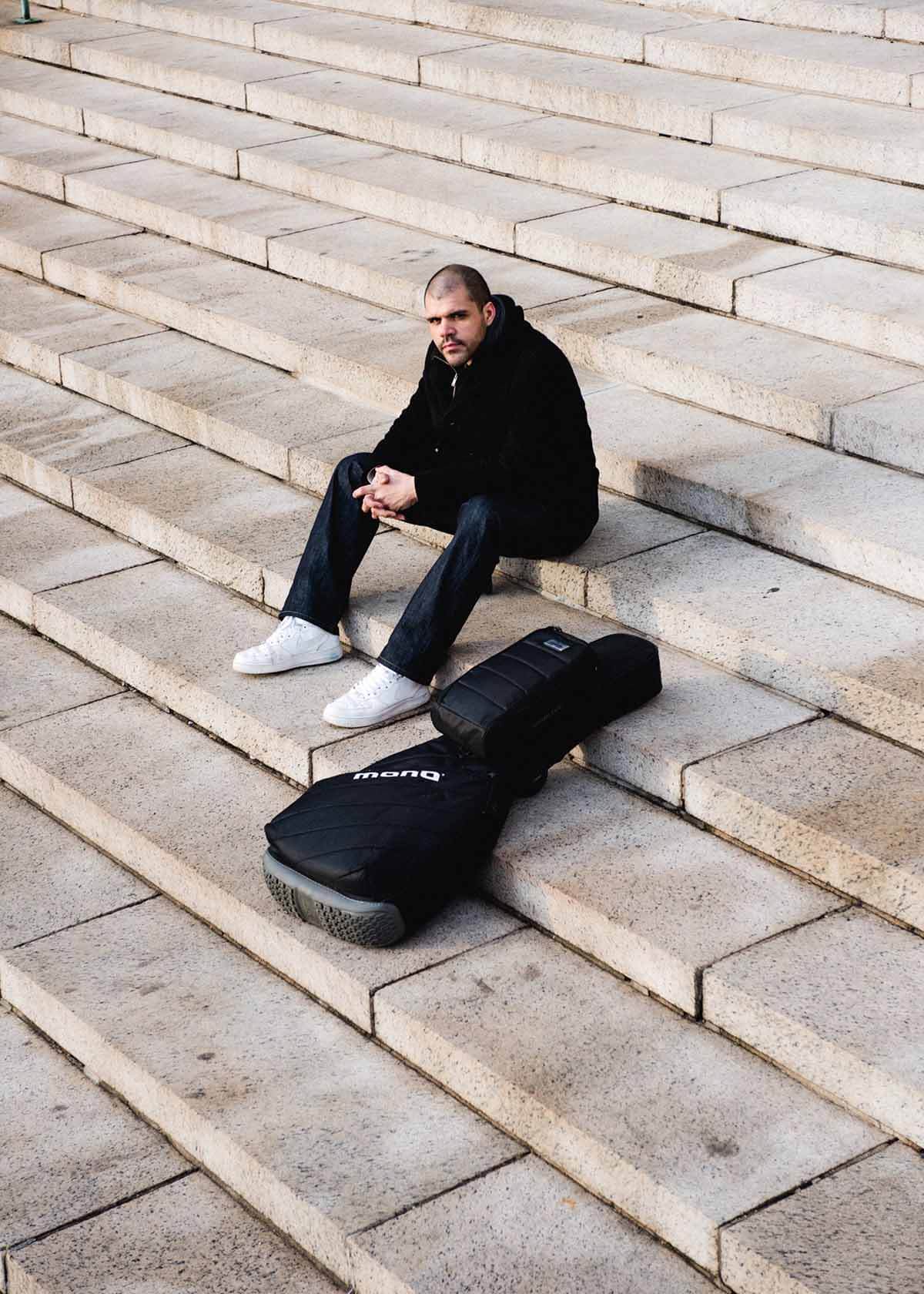
What MONO gear do you use at home, in the studio or on tour?
I have a quite a bit of MONO gear, I use it all! Got an M80 electric guitar bag, a Vertigo for my 335, a guitar Sleeve for the Telecaster, an M80 Dual Acoustic/Electric, a Classic Club Pedalboard case and I use the Betty Strap on all my guitars.
What’s next for Flávio Silva?
I am about to start mixing a new trio joint I recorded with the great Emma Dayhuff on Bass and Michael Piolet on drums. We recorded tunes by all of us plus some standards, we are deciding if that will become an album or an EP. Other than that, I’ve started working on and choosing material for an upcoming project, which will have versions of my favorite tunes by artists like Sting, Sade, The Meters, among others. Stay tuned!
Check out Flávio’s MONO cases here, or see the whole MONO catalog here.
